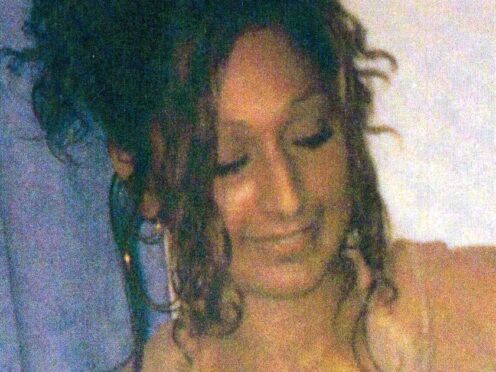
A woman who was shot dead outside a police station 21 years ago was unlawfully killed, a jury has concluded.
Sabina Rizvi, 25, was killed in the early hours of March 20 2003 as she drove away from Bexleyheath police station in south east London.
In 2004, Paul Asbury, then aged 22, was sentenced to life imprisonment with a minimum term of 20 years after being convicted of her murder and the attempted murder of her boyfriend, Mark Williams, who was a passenger in the same car.

An inquest into Ms Rizvi’s death at the Old Bailey has been looking into whether officers at Bexleyheath police station were implicated in what happened.
The jury forewoman told the court: “On 20 March 2003, shortly after leaving Bexleyheath Police Station, Sabina Rizvi was shot by unidentified assailants (assisted by another who was later convicted of her murder) whilst driving a vehicle on Watling Street, Bexleyheath and she died as a result of a gunshot wound to the neck.”
Opening proceedings earlier this month, inquest counsel Cathryn McGahey KC said Ms Rizvi’s family believed there was more to investigate.
Ms McGahey had said: “The criminal trial had looked only at the role of Paul Asbury and of accomplices who had been directly involved in the shooting or in destroying evidence afterwards.
“The criminal trial had not looked at whether the police at Bexleyheath police station were in any way implicated in what had happened.”
On Tuesday Ms Rizvi’s family, who were carrying a large photograph of her, left the court as assistant coroner Angela Rafferty KC began summing up the case to the jury as the hearing neared its end.
The coroner told the jury: “Sabina’s family have fought for many years to have this inquest – their grief is still palpable. There may never be closure for them.”
The coroner said there was insufficient evidence to find the police ought to have known there was a risk to her life or could have taken action to prevent it.
There was no evidence that officers had inadvertently notified Asbury of Williams’s whereabouts. Asbury already knew he was at the station, the jury was told.
Asbury, a known thief and burglar, accepted responsibility for Ms Rizvi’s murder while giving evidence at the inquest, but refused to name the two people who fired the shots.
He told the court Ms Rizvi was “caught up in the middle” of a plan to shoot Mr Williams, who was a criminal rival.
He was in a red Vauxhall Astra when he spotted Mr Williams in a Nissan Bluebird being driven by Ms Rizvi as they left the police station.
He said he informed two others driving a Ford Mondeo and they carried out the shooting at around 2.20am, which he said he did not see.
Ms Rizvi was killed by a bullet that went through her neck.
Mr Williams was shot twice in the head – surviving but with significant brain injuries affecting his memory.
Lee Catling, a former detective chief inspector who led the investigation into Asbury and two unknown gunmen, told the hearing he did not see any evidence that officers had assisted the suspects or that the police had let slip to Asbury the whereabouts of Mr Williams while he was at the station.
In March 2003, Ms Rizvi bought an Audi TT with £15,000 given by her mother and went to the police to check it was not stolen.

She went with Mr Williams to Peckham police station on March 13 and was told the vehicle was not listed as stolen.
Later the same day, Asbury phoned Bexleyheath police station and said his Audi had been carjacked.
On March 16 2003, he called then detective sergeant Robert Florio, who was in charge of the carjacking investigation, and said the girlfriend of someone called “Bucky” – a nickname for Mr Williams – had his car, jurors were told.
Mr Florio asked Ms Rizvi to come to Bexleyheath police station on March 19 with the documents for the Audi, the inquest heard.
She told police she had paid Asbury for the Audi and agreed to a search of the vehicle. She called Mr Williams and he drove the car to the police station, arriving at about 10.25pm.
Police arrested Mr Williams after he arrived as he matched the description Asbury had given of one of the car thieves.

Mr Williams was wearing a bullet-proof vest when he was arrested and told police this was because he “moved in certain circles” in south London.
Officers later realised from its markings that it was a Metropolitan Police vest.
Interviewed by police in the early hours of March 20, Mr Williams denied having anything to do with the carjacking and said he was wearing the vest because he was a friend of someone who was wanted for murder and was “afraid of reprisals from associates of the murder victim”.
Minutes after leaving the police station, at 2.20am, the shooting occurred.
After the inquest Ms Rizvi’s mother Iffat Rizvi said: “Nothing will ever mend our broken hearts at the loss of our much-loved daughter and sister and we will treasure her memory for all of our lives.”
An Independent Office for Police Conduct re-investigation into contact officers had with Ms Rizvi shortly before she was murdered found no evidence to indicate any potential misconduct by officers but there were some “issues” identified around police actions.
IOPC director Steve Noonan said: “We found issues around the supervision of an inexperienced officer which resulted in Mr Williams making a call while detained resulting, it is believed, in a message being passed on to Paul Asbury.”

Enjoy the convenience of having The Sunday Post delivered as a digital ePaper straight to your smartphone, tablet or computer.
Subscribe for only £5.49 a month and enjoy all the benefits of the printed paper as a digital replica.
Subscribe